It's probably best to start the review with arguably the most controversial part of Darkest Dungeon II. It's probably more genuine to call it a spin-off than a true sequel. Gone is the game flow of the original, where you make repeated trips into dungeons to gradually build up your forces and your town. Instead, it's easier to compare it to something like Slay the Spire, where each run is a distinct stand-alone thing; your goal is to get to the end, fight a particularly tough boss, and then move on to the next challenge. There is meta progression between levels, but it isn't the same as the original, where you'd dedicated hundreds of hours to progress. It's a far more pared-down experience that's focused more on moment-to-moment gameplay. It also is more character-focused, with more defined characters in various roles instead of the generic ones.
The result? Darkest Dungeon II doesn't feel like the first game. That isn't necessarily a bad thing, but it means that it's possible to have loved the first game and dislike the second — or vice versa. DDII is a game for the people who found the combat to be the most engaging part of the experience and wanted a ramped-up, refined version of that, with the other parts pared down. This also means if you disliked Darkest Dungeon, you'll enjoy the sequel more, since it focuses on one particularly strong element.
I have mixed feelings about the changes. The original Darkest Dungeon was a delight of emergent storytelling. Half of my memories of the original game isn't of the big plot moments but of the smaller elements that built up over time. It's difficult to say that DDII recaptures the same feeling. I no longer feel as hesitant about losing characters, and the risks that can ruin a run don't feel like they have the same long-term consequences. If you don't take it as DDII but just a game in the same setting and world, it's an interesting twist on the formula.
As mentioned, gone is the simple estate and town setting. Instead, every run begins in the same way. You gather four adventurers and set off in a wagon, heading from your desolate home to the dark mountains as you protect the Flame of Hope. The flame is the last true light in the world and the last hope for humanity, so it must remain kindled. The journey from location to location is presented as a behind-the-wagon 3D view, but the actual layout is more like Slay the Spire, where you journey from node to node and face combat, events, and special rewards that can power up your characters.
In theory, the Flame of Hope is similar to the Torch mechanic from the original Darkest Dungeon, but it's more binary. The flame must be kept kindled as high as possible, but the act of travel can decrease it, as can certain enemy attacks. There are items and events that can increase it, but often, their use comes at the cost of other rewards. The lower the flame goes, the more powerful your enemies get. At zero flame, you get ambushed by an extra-hard challenge that either ends your run or restores your flame slightly, so you can limp on. There's no reason to keep your flame low in this game, so burning brightly is always the best outcome. There are also special flames that you can equip before a run to either make the game easier or harder, so there's some customization.
Combat is in the same vein as the original Darkest Dungeon, and it's probably the most overtly similar. It's a turn-based RPG, where each side has four "slots." Each attack can attack different slots, and likewise, some can only be used in certain areas. Melee attacks can't be used from the back row, ranged attacks often can only hit certain areas, and so on. This plays heavily into the combat flow, as movement is a crucial factor in tactics. Being able to pull an enemy out of their safe spot into close range where they can't use their strongest moves makes some foes a lot easier to deal with. Likewise, enemies try to mix up your formations.
Again, as in the original game, combat is brutal and rewards underhanded play. You don't just want to hit the biggest number attack. Indeed, most characters thrive on piling bad status effects, debuffs, and other debilitating effects onto foes. Healing is useful and keeps your characters alive and well, but it isn't going to outpace enemies for long. The best way to survive in combat is to do everything you can to make enemies regret coming within range of you.
Not only do you manage health in DDII, but you also manage character relationships and stress. Stress is similar to the original game. Certain actions, attacks and events raise or lower stress. Doing poorly in combat or seeing lots of unnatural horrors can raise stress quickly, while fighting well or taking care of your characters can lower it. As stress increases, the character gets more belligerent. At maximum stress, they can suffer a mental breakdown, which gives a permanent debuff, a massive loss of health, or makes everyone hate them. They'll rarely trigger resolution, which is a permanent buff, restore health, or improve relationships. Perhaps the top way to die in the game is to slowly ramp up the stress until your party can't function anymore.
DDII makes this more complex with the addition of the Affinity system. As mentioned, the characters can grow to like or hate one another, depending on a number of factors. While everyone starts out neutral, they gradually form relationships. Helping your allies in combat improves their view of you, while other acts can make them dislike you. Higher values of either can trigger special relationship buffs or debuffs. Positive buffs make characters work better together, while negative debuffs can make them fight and argue — and increase stress.
Probably the biggest factor in whether you'll enjoy DDII's combat is how you feel about the Affinity system. It plays a huge role in combat, as negative traits can quickly pile up more negative traits. It only takes one bad egg to turn your group of heroes into a squabbling band of misfits who are easy picking for evil cultists. It takes a far more significant role than even Darkest Dungeon's similar mechanic, and since you have a defined crew, you can't kick out a bad member without a serious loss in power. If you hated the stress mechanic in Darkest Dungeon, the sequel will probably make you despise it, but if you don't, then it can be quite fun to figure out how to manage your band of characters to best work together.
Your goal is less about building up the strongest characters and more about balancing the characters you have for as long as possible. There are a lot more direct gameplay decisions to make, and the cost and consequences of mistakes is both higher and lower. It's higher because it can easily spiral out of control and cost you a run, and it's lower because losing a run means starting over, rather than losing a carefully tempered and trained hero.
DDII is a fun game, but it's not one that reaches the dizzying highs of the original. It's far more geared to pick up and play, and it encourages a stronger focus on the raw mechanics. I had a tough time getting into it because I kept thinking back to the original, but once I let go of that particular feeling, I enjoyed it a lot more. The combat system has more options and refinements, and the greater emphasis on moment-to-moment gameplay keeps things engaging rather than emphasizing slow progress. It is not really a sequel to the game I loved, and it should be judged on its own merits.
One area I was particularly impressed by was the presentation. DDII moved from hand-drawn artwork to 3D models, and I initially had a strong negative response to hearing that. In motion, however, the game looks amazing, and the new models capture the aesthetic and tone of the original game but with greater and smoother movement. It is genuinely a big step up and a great example of how to translate a primarily 2D art style to 3D models without losing any of the value. The voice acting, once again provided by the amazing Wayne June, continues to do a fabulous job of setting the world's eerie mood. He's more encouraging, but that makes his world-weary, bombastic horror feel all the more off-putting.
Darkest Dungeon II is not the game I wanted. It's its own thing that is a darn fun game with a lot of interesting mechanics and beautiful artwork. One can't pre-judge DDII based on a player's opinion of the original. It shares a tone, a combat system, and a general aesthetic, but the flow and style of gameplay is so different that it is entirely its own thing. It will take hardened Darkest Dungeon players a bit to adjust to the change. If you're willing to go with the flow, it's an engaging and exciting title, if not quite the masterpiece of the original.
Score: 8.0/10
More articles about Darkest Dungeon II


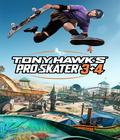
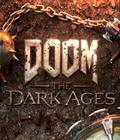
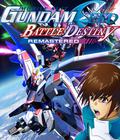
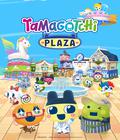
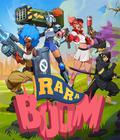
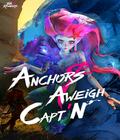
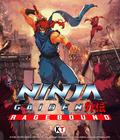


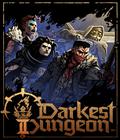 Darkest Dungeon II is a challenging gothic roguelike RPG that will test your mettle and drive you to the brink of madness.
Darkest Dungeon II is a challenging gothic roguelike RPG that will test your mettle and drive you to the brink of madness.




























